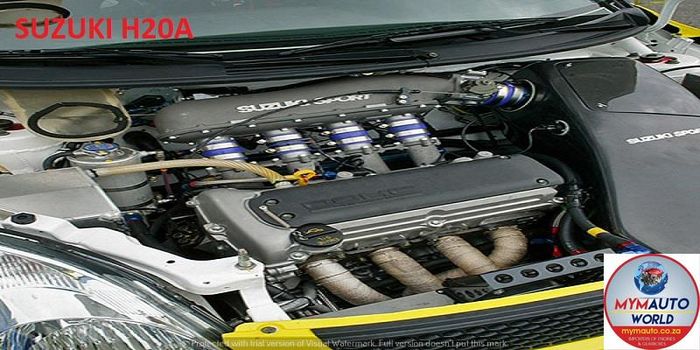Opel Corsa Engine: Efficiency and Dependability for Your Automobile
Checking Out the Inner Workings of a Compact Vehicle's Engine System
As motorists, we frequently take for approved the complex procedures that take place within the confines of our automobile's engine system. In this expedition of a small car's engine system, we will certainly decipher the inner operations of this mechanical harmony, shedding light on the secrets that drive us ahead on our everyday trips.
Combustion Process Introduction
The combustion procedure in a small automobile's engine system is a critical system that efficiently transforms gas right into energy to power the car. This process takes place within the burning chamber of the engine, where fuel and air mix, stir up, and generate regulated surges. The burning process contains 4 major stages: consumption, exhaust, power, and compression.
Throughout the consumption stage, the piston moves downward, attracting a blend of air and gas right into the combustion chamber. The following stage, compression, involves the piston moving upward, compressing the air-fuel mix to boost its strength. Ultimately, in the power stage, the spark plug sparks the pressed mixture, causing a fast expansion of gases that forces the piston pull back. This down activity generates the power required to drive the car. Ultimately, in the exhaust phase, the burned gases are removed from the combustion chamber with the exhaust shutoff, preparing the chamber for the following cycle. This cyclic burning process is fundamental to the operation of a compact vehicle's engine system, making sure reliable energy conversion for propulsion.
Piston and Cyndrical Tube Communication

The piston's accurate fit within the cylinder is essential for keeping ideal compression and preventing power loss throughout combustion. Tight clearances in between the piston and cyndrical tube wall surfaces make sure effective sealing, allowing the piston to move smoothly without allowing gases to leakage past. Proper lubrication is likewise important to reduce friction and use between these components, boosting long life and efficiency.
Additionally, the design and products made use of in producing the piston and cylinder effect engine performance and toughness. Modern engines typically use light-weight yet resilient materials like light weight aluminum alloys for pistons and cyndrical tube liners to reduce inertia and improve thermal performance. Generally, the harmonious interaction in between the piston and cyndrical tube is fundamental to the engine's functionality and general efficiency.
Fuel Injection System Performance
Fuel shot systems in compact vehicle engines play an essential role in specifically supplying gas to the burning chamber for reliable and regulated ignition. The fuel shot system works by infusing gas right into the burning chamber at the optimal moment during the engine's procedure (opel corsa engine). This specific timing ensures that the gas blends evenly with the air for appropriate combustion, leading to improved fuel performance and lowered exhausts
There are largely two types of fuel shot systems utilized in compact automobile engines: port fuel shot (PFI) and straight gas injection (DFI) PFI systems inject fuel into the consumption port prior to the intake shutoff, while DFI systems inject gas directly right into the combustion chamber. Both systems have their benefits, with DFI supplying better fuel atomization and PFI supplying a much more cost-efficient remedy.
Recognizing Engine Cooling Mechanisms
Reliable operation of a portable car's engine counts greatly on the efficiency of its cooling systems. The air conditioning system in a portable lorry commonly consists of a number of elements working together to control the engine temperature level. Comprehending these engine air conditioning devices is essential for keeping the performance and longevity of a official website small car's engine system.

Exhaust System Parts Explained
The optimum performance of a small vehicle's engine cooling systems relies on a corresponding system understood as the exhaust system, which makes up different necessary elements for guaranteeing reliable discharges and engine efficiency. The exhaust system consists of elements such as the exhaust manifold, catalytic converter, muffler, and tailpipe. The exhaust manifold accumulates exhaust gases from the engine's paths and cyndrical tubes them to the catalytic converter. The catalytic converter then transforms dangerous toxins in the exhaust right into less harmful emissions before launching them through the muffler and tailpipe.
One critical component of the exhaust system is the oxygen sensor, which monitors the oxygen levels in the exhaust gases to help control fuel consumption and ensure optimal engine efficiency. opel corsa engine. Additionally, the resonator may exist in some exhaust systems to reduce noise degrees. In general, the directory exhaust system plays an important role in keeping engine efficiency, minimizing hazardous exhausts, and ensuring a quieter driving experience for compact vehicle proprietors

Final Thought
Finally, the small vehicle's engine system is a complex combination of parts that work together to assist in the burning process, transform fuel into power, and remove waste gases. Understanding the inner functions of the engine system, including the piston and cylinder communication, gas injection system, engine cooling devices, and exhaust system elements, is critical for preserving ideal performance and efficiency of the vehicle.
The combustion procedure in a compact lorry's engine system is an essential system that efficiently converts fuel right into energy to power the vehicle.Fuel injection systems in portable car engines play a crucial duty in specifically supplying fuel to the burning chamber for controlled and reliable ignition.There are mainly 2 kinds of gas shot systems used in portable car engines: port fuel shot (PFI) and straight fuel shot (DFI) Comprehending these engine cooling systems is important for keeping the efficiency and longevity of a small car's engine system.
The ideal functioning of a compact car's engine cooling systems depends on a look what i found corresponding system recognized as the exhaust system, which makes up different necessary components for making sure efficient emissions and engine efficiency.